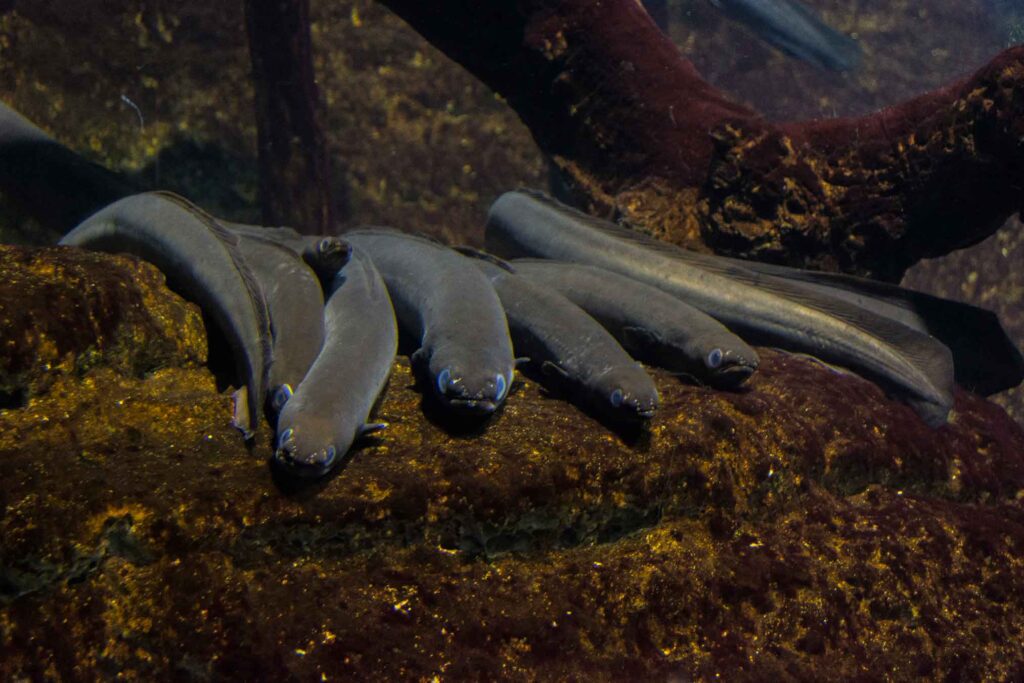
Eel
Anguilla anguilla
maximum length

122 cm
feeding

Carnivore
activity

Diurnal
The eel is a fish with an elongated body, cylindrical, grey with a more or less white belly, although this colouring varies in the different stages of its life. The dorsal, caudal and anal fins are joined in a single one. It has scales, but they are under the skin, which is covered with abundant mucosa.
It is a migratory animal. The males live in river mouths and the females in the higher part of the rivers.
Depending on the environment where they live, they feed on worms, aquatic insects, molluscs, crustaceans and fishes and this is therefore a carnivorous species.
Eels live in the river and when they reach sexual maturity (between 10 and 12) they make a journey (migration) across the Atlantic ocean to the Sargasso Sea (between Bermuda and Puerto Rico). After laying their eggs (up to 9 million) the adults die of exhaustion. The larvae are dragged by the Gulf Stream to the European coasts. Each larva (elver) reaches the same river its progenitors left. Once in the Mediterranean, if the elver remains in the river mouth it will be male and if it climbs to the upper part it will be female. Therefore, it is the water salinity that causes the adults’ sex.
It is a common species in coastal lagoons. The females live in the upper part of the river and the males in the river mouth.
Interesting facts
Eels’ skin, covered with mucosa, can be kept damp for a time out of the water. This means they are able to breathe through the skin (skin breathing) and move on land if necessary.
Distribution
Conservation status
